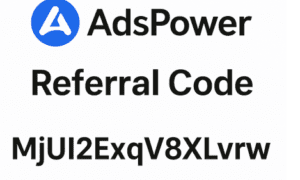(AI-Generated)
Blockchain and DeFi can be quite unpredictable, which is why a smart contract audit isn’t just another technical milestone but a critical step that can make or break your project.
Audits ensure your code is secure, functional, and free from sneaky bugs that could put your users—or your reputation—at risk, but here’s the deal: you can’t just toss your code at an auditor and expect magic to happen. A tranquil, though effective audit starts with solid preparation on your end.
Let’s break down exactly how to prepare your smart contract for a successful audit.
Organizing Your Code and Documentation
Keep It Simple, Keep It Clean
First off, structure your code to make life easy for everyone, especially the auditors. Think of it like this: messy, unstructured code is like a messy kitchen. No one wants to cook there!
- Use consistent naming conventions, such as camelCase, snake_case, or whatever your team prefers, and be consistent throughout;
- Break down your code into smaller, logical modules or contracts;
- Comment your code where necessary; providing brief explanations goes a long way in helping others understand your logic.
Organizing your code means you’re making the audit easier and you’re showing you take your project seriously.
Beef Up Your Documentation
Great documentation can save your auditors (and you) many headaches. Here’s what to include:
- Project Overview: Explain what your smart contract does and how it fits into the bigger picture;
- Architecture Diagrams: A quick sketch or diagram can help auditors visualize your system’s flow;
- Function Descriptions: Each function should be explained clearly, outlining its inputs, outputs, and purpose;
- Deployment Instructions: Give step-by-step details so auditors can deploy and test without hassle.
Remember that clear documentation is a time-saver and can significantly reduce audit costs.
Common Pitfalls to Avoid Before Auditing
Before handing over your code, you should know some of the biggest red flags that trip up projects during an audit.
Reentrancy Vulnerabilities
This classic exploit lets attackers repeatedly call a contract’s function before it updates its state. If you’re not careful, it can drain your contract’s funds faster than you can say “rug pull,” so make sure you:
- Always update the contract’s state before making external calls;
- Use reentrancy guards like OpenZeppelin’s ReentrancyGuard to keep your contract safe.
Integer Overflows and Underflows
Math errors can be disastrous in smart contracts; imagine if someone could send themselves unlimited tokens! To prevent this:
- Use Solidity 0.8.0 or higher, which has built-in overflow checks;
- Alternatively, use safe math libraries to protect your contract’s calculations.
Unchecked External Calls
When calling external contracts, don’t just hope for the best—check the result!
- Always verify the success or failure of external calls (call, delegatecall, etc.);
- Handle unexpected errors or revert logic properly to avoid vulnerabilities.
Inadequate Access Control
This one’s a biggie: who can do what? If your contract’s functions aren’t properly restricted, anyone could mint tokens, change ownership, or worse. As such:
- Use role-based access control and thorough permission checks;
- Don’t rely solely on msg.sender—be intentional and explicit about who has access.
Testing and Quality Assurance Before Submission
Good testing is your secret weapon, as it can uncover hidden bugs long before the auditors do.
Unit Testing
Start small. Unit tests should cover every function in your contract and check for normal, edge, and error cases.
- Use frameworks like Hardhat or Truffle for thorough unit tests;
- Don’t stop at the “happy path”; instead, test for unexpected or malicious inputs, too.
Integration Testing
Your contract doesn’t live in a bubble. Make sure it plays nicely with the rest of your stack.
- Test how different modules interact and how your contract behaves in real scenarios;
- Use mainnet forks if you need to simulate real-world conditions.
Automated Tools
Leverage static and dynamic analysis tools:
- Slither: Find common vulnerabilities and code optimization suggestions;
- MythX or Oyente: Automated tools to detect security risks before the auditors do.
Code Coverage
You want your tests to cover as much of your code as possible, so aim for high code coverage. If you can get to 90% or above, splendid. This gives you and the auditors confidence that your contract won’t surprise anyone.
Working Effectively with Auditors
Once your code is buttoned up and tested, it’s time to get your auditors on board. Here’s how to make that collaboration smooth and effective.
Freeze Your Code
Resist the temptation to tweak your contract once the audit has begun. Every change you make can invalidate parts of the audit and cause confusion.
- Tag a final release version before the audit starts;
- Avoid significant changes during the process; it’s best to talk to the auditors first if something urgent arises.
Be Transparent and Open
Auditors aren’t mind readers, so the more context you give them, the better.
- Provide complete documentation, deployment scripts, and test cases;
- Be ready to answer questions or explain parts of the logic that might not be obvious.
Review the Audit Report
When you get that final audit report, you shouldn’t treat it like an end-of-year report card. Engage with it, instead!
- Understand each finding’s severity and its impact on your project;
- Work with your team to fix vulnerabilities as soon as possible;
- Ask auditors for clarification if any finding isn’t clear or seems questionable.
Far more important than getting a “perfect” report, a great audit is about learning, improving, and shipping something you can be proud of.
Final Thoughts
A successful smart contract audit starts with you. The more organized, tested, and well-documented your code is, the smoother the process. Don’t think of the audit as an obstacle; see it as a critical partner in building user trust and project credibility.
When you’re ready to take your project live, a thorough audit is your best bet for a secure, successful launch. So, take the time to prep your contract, collaborate with your auditors, and build something that lasts!





























